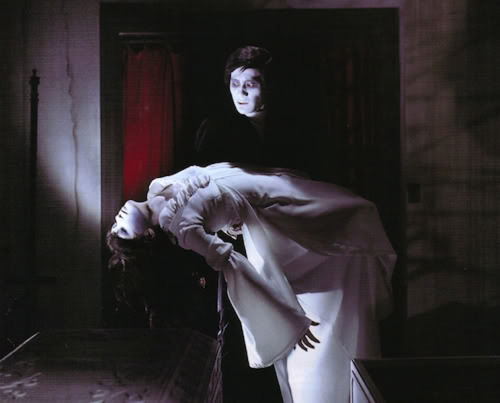Available on Blu-ray Mon 14 May 2018
In the early 70s, the famed Toho studios, best known for the original Godzilla series, released a trio of vampire films that looked to the West for inspiration. Adopting the lush Gothic stylings of prime Hammer horror and applying them to contemporary rural Japanese settings, director Yamamoto created curious cross-cultural hybrids that, while not wholly satisfying, are worth getting your teeth into.
The Vampire Doll was released in 1970 and has the most singular story of the three. A young man drives out to the country to visit his fiancée. On arrival he’s told by her mother that she was killed in her car by a landslide two weeks earlier. He promptly goes missing, drawing his sister and her boyfriend to the remote village in search of him. After repeated glimpses of the dead girl they dig deeper into the family curse that will reveal the fate of the missing man.
Both Lake of Dracula and Evil of Dracula have similar stories and owe overt debt to Christopher Lee‘s portrayal of Dracula. In each, an old evil is lurking in a sleepy rural backwater and a young hero or heroine investigates before being forced to confront the monster come the film’s conclusion.
None of these films will linger too long in the memory, but there is more than enough quality to stop them from being written off as a shameless knock-off. There is a certain element of that to be sure, particularly as the vampires in the film are never referred to as Dracula, but there is both craft and charm to spare in the execution. Yamamoto served as second unit director on Kurosawa’s Throne of Blood so he’s no slouch when it comes to atmosphere and technique. The acting is on the decent side of hammy, and the mix of the leafy Japanese countryside and the heady absinthe haze of Hammer gothic works really well. For obviously low budget affairs, they look gorgeous.
Handy context to the films is provided by walking horror encyclopedia Kim Newman in a brief, but informative feature, placing these oddities as loving tributes to the likes of Terence Fisher, but with its own Japanese spin. With each featuring possessed women in thrall to a greater evil, to Newman they bridge the gap between the vengeful Yuki-onna of classical Japanese myth and the lank-haired Sadakos and Kayakos of the J-Horror boom of the around the turn of the Millennium.
While not hugely likely to get the pulses of modern audiences racing, The Bloodthirsty Trilogy is interesting, well-made and worth a look for inquisitive Hammer fans, and vampire films in general.
